Written by and Photos by Michnus Olivier. Posted in Rides
The route from Washington all the way to California is home to beautiful fairytale forests, snow-peaked volcanos, lush valleys, old Spanish lighthouses dating from the 18th century, sea lions and alluring beaches. It’s a route that includes the majestic nearly 3,000-year-old growth redwoods with their distinct Jurassic era feel. Some of these giants tower over five stories high. Although it’s a well-trotted route, there are hidden gems to still see and explore along the way.
We did not stick to the normal route of strictly following The Pacific Coast Highway (PCH). Our journey took us towards Baja California using BDR and Butler maps and our own research. Fortunately, we were often distracted along the way. There was so much to experience and see it was impossible to stay on any single route. We decided early on to explore more of the backroads and dirt tracks winding through the magnificent forest areas.
The PCH is actually an unofficial designation for a couple of different roads, and basically applies to whichever is closest to the coast at any given time. For example, travelling south of San Francisco, the signage is for CA-1, and north of there it is US-101. Most of the PCH was built in the early 20th century and in 1923 was proclaimed as the longest continuous stretch of paved road in the world at that time.
We found the inland scenery and landscapes just as inspiring with its displays of rolling grass hills, elaborate wildflowers, picturesque waterfalls, flowered meadows, lush valleys, and majestic coastal mountains. We avoided crowds because it was late summer, and it was not overly hot during the day. Evenings were pleasantly cool.
Beautiful old Douglas firs filled our nostrils with their sweet scent as we rode to our campsite on Mount Rainier. After quickly setting up camp, we went hiking almost halfway up the mountain following cool streams to where the snow cap glacier was more visible. This is a place where one can camp for weeks, and daily hike and explore new sections of wilderness.
The majestic Mt. Rainier. We set up camp for three days—hiking and taking rides around the area, and sitting up late watching the stars move above the treetops.
From Mount Rainier, a dirt road took us along the edge of the rugged Mount Adams, the second-highest mountain in Washington State, and past the once-mighty Mount St. Helens. In May 1980, this volcano blew half of itself into the sky in an enormous explosion and forever changed the landscape of this once near-perfect volcanic cone, flattening huge forest areas which to this day have not recovered properly. There are secluded places to camp in the woods all along the dirt tracks of this corridor. Our pick was at Horseshoe Lake, a strangely warm alpine lake with great views of Mount Adams and not a soul around. It’s the perfect place to go on short or long hikes to see wildlife.
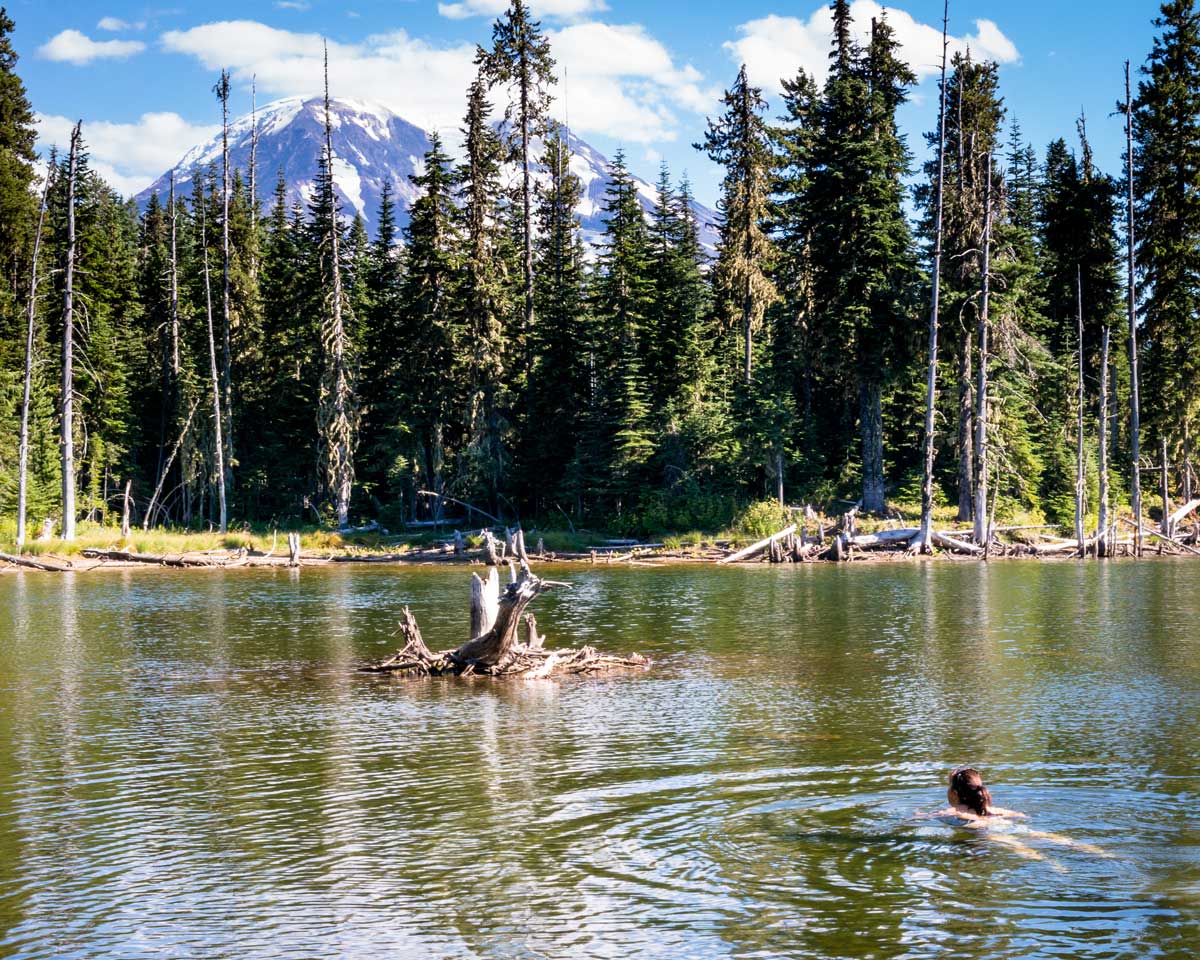 Horseshoe Lake, a strangely warm alpine lake with great views of Mount Adams and not a soul around.
Horseshoe Lake, a strangely warm alpine lake with great views of Mount Adams and not a soul around.
The area with Mount St. Helens and Mount Adams Wilderness still provides a true backcountry wilderness experience.
Crossing the Columbia River into Oregon, we stayed along the coast with its breathtaking views of the Pacific. Whale watching at Coos Bay, astonishing beautiful sunsets, quaint working fishing towns and craft beer are all part of the scenic ride down the Oregon coast. There are so many super-cool campsites along the coast there’s no need to stay in hotels. Local American campers were eager to chat with us and hear our stories; we would never have met so many interesting people if we’d been stuck in hotels.
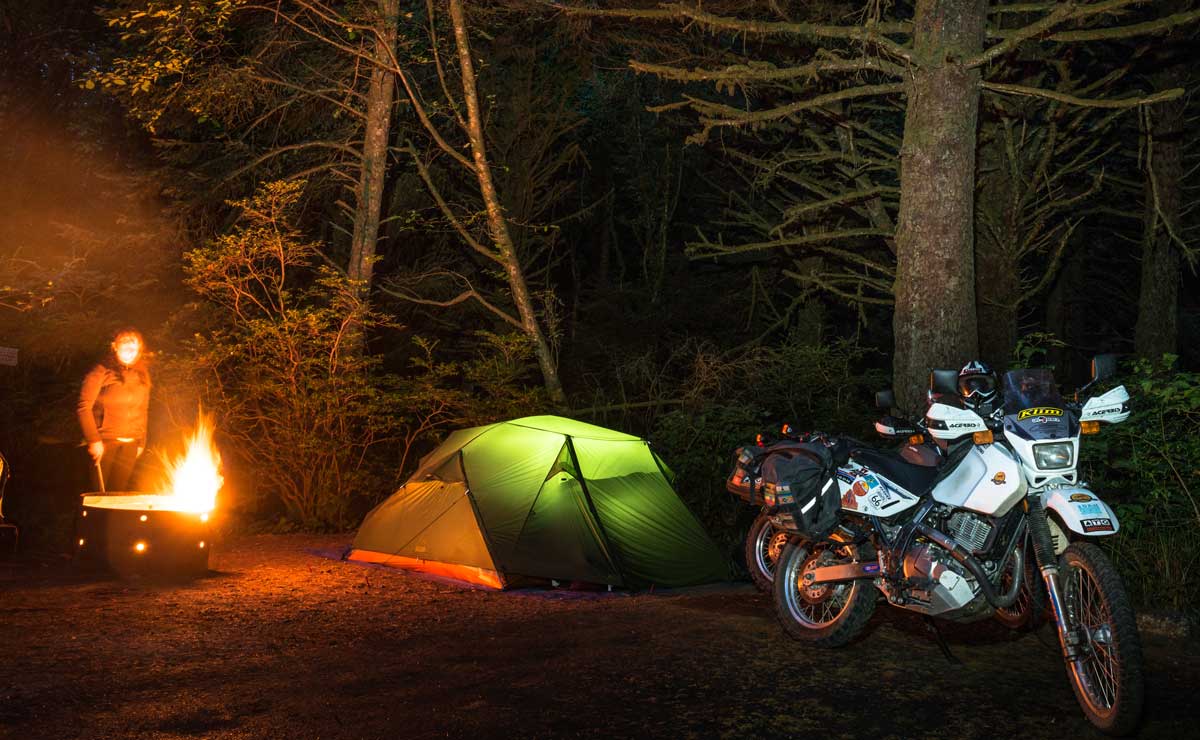 The entire West Coast is camping heaven, with many campsites, nestled in incredible areas. In the off-season, there’s no need to plan for camping, as so many sites have spaces available.
The entire West Coast is camping heaven, with many campsites, nestled in incredible areas. In the off-season, there’s no need to plan for camping, as so many sites have spaces available.
“They grew old and bought recreational vehicles.”
I asked an elderly man what happened to the authentic real hippies that roamed California and the Pacific coast in the ‘60s and ‘70s? The ones that smoked weed and had naughty naked parties on the beaches. We were hoping to mingle with the real ones. His answer was “they grew old and bought RVs.” It was a sad state of affairs, but our confidence in the free lifestyle was restored by the sheer amount of younger van-dwelling travelers cruising up and down the coast. They were mostly youngsters in raggedy old vans and VW buses wearing their parents ’60’s clothes, but at least they drank as hard and smoked as much grass, keeping up the tradition.
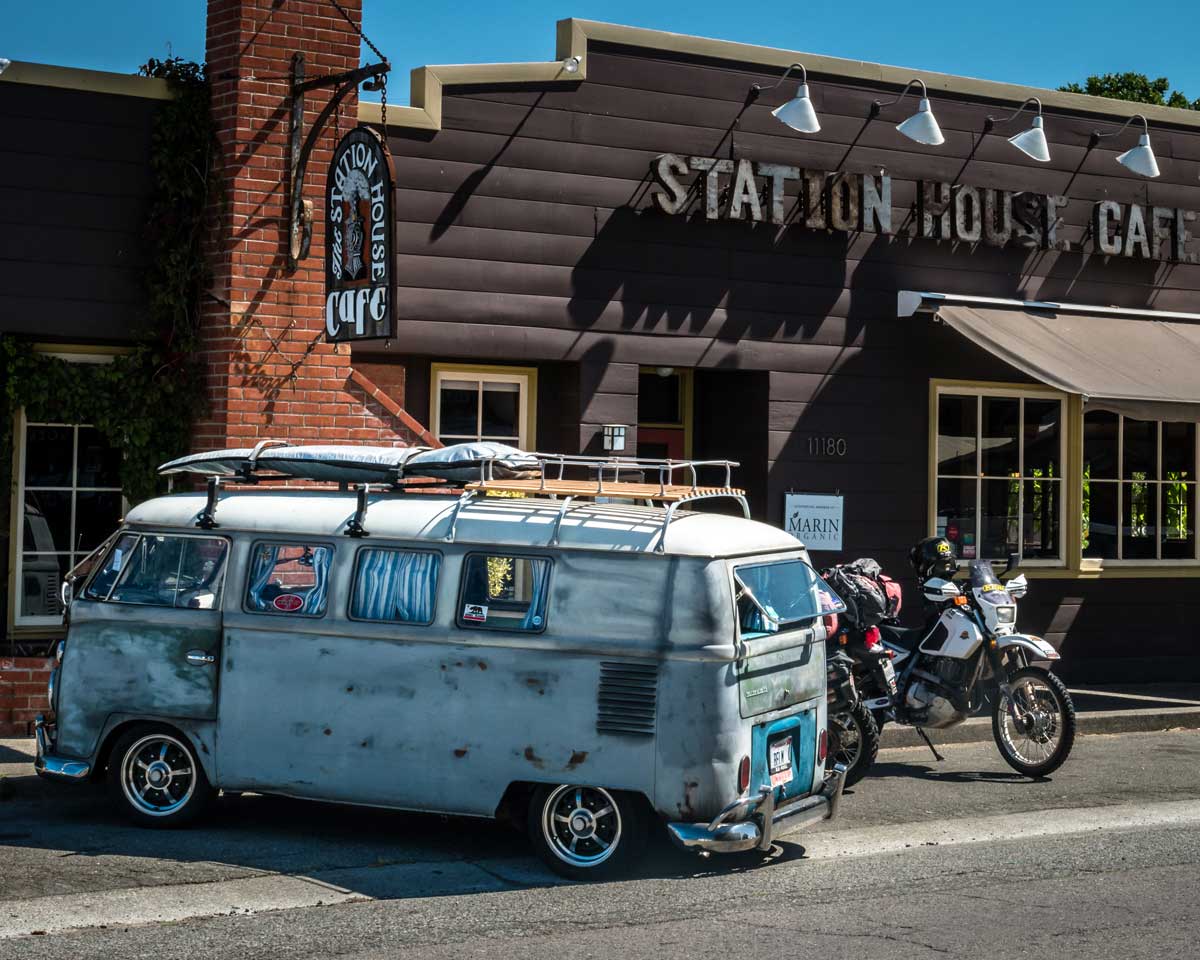 The “Hippie” free lifestyle was restored by the sheer amount of younger van-dwelling travelers cruising up and down the coast.
The “Hippie” free lifestyle was restored by the sheer amount of younger van-dwelling travelers cruising up and down the coast.
With that said, we’ve never been offered so much cannabis so often as in Oregon and California… cough, cough. It happened in campsites and a few times even when we stopped for fuel or something to eat. Locals came up for a chat and then in the end with much laughter and good cheer offered weed as a kind gesture. U.S. law enforcement seems like quite an angry tight-ass bunch, so we respectfully declined. Along some parts of Highway 1, north of San Francisco Bay, we’d often whiff the pungent smell cannabis as we rode South.
The one big reason for travelling PCH is to visit the redwoods and the Avenue of the Giants in California. Those unbelievable photos on the internet where a tunnel was built through the trunk of a tree. It’s so big that people drive their cars through… unreal. Those trees are shockingly huge to see in real life.
There are few things more overwhelmingly spectacular to see in real life than the redwoods (Sequoioideae) trees.
Giant sequoias and California redwoods (also called coast redwoods) are skyscrapers in nature. Baby redwoods often sprout at their parents’ base, latching onto their roots for nutrients. Because of this they often grow in circular clusters called “fairy rings.” Redwoods have a chemical inside the pores that makes them weather-, insect- and rot-resistant.
Hiking around the Redwood National and State parks is a great way to experience the magnificence of trees and the forest. The best part of it is the numerous camping spots in the Avenue of the Giants, spending time among these skyscrapers. As it was late summer, the air was crisp in the mornings, which also left a nice and fresh aroma in the forest.
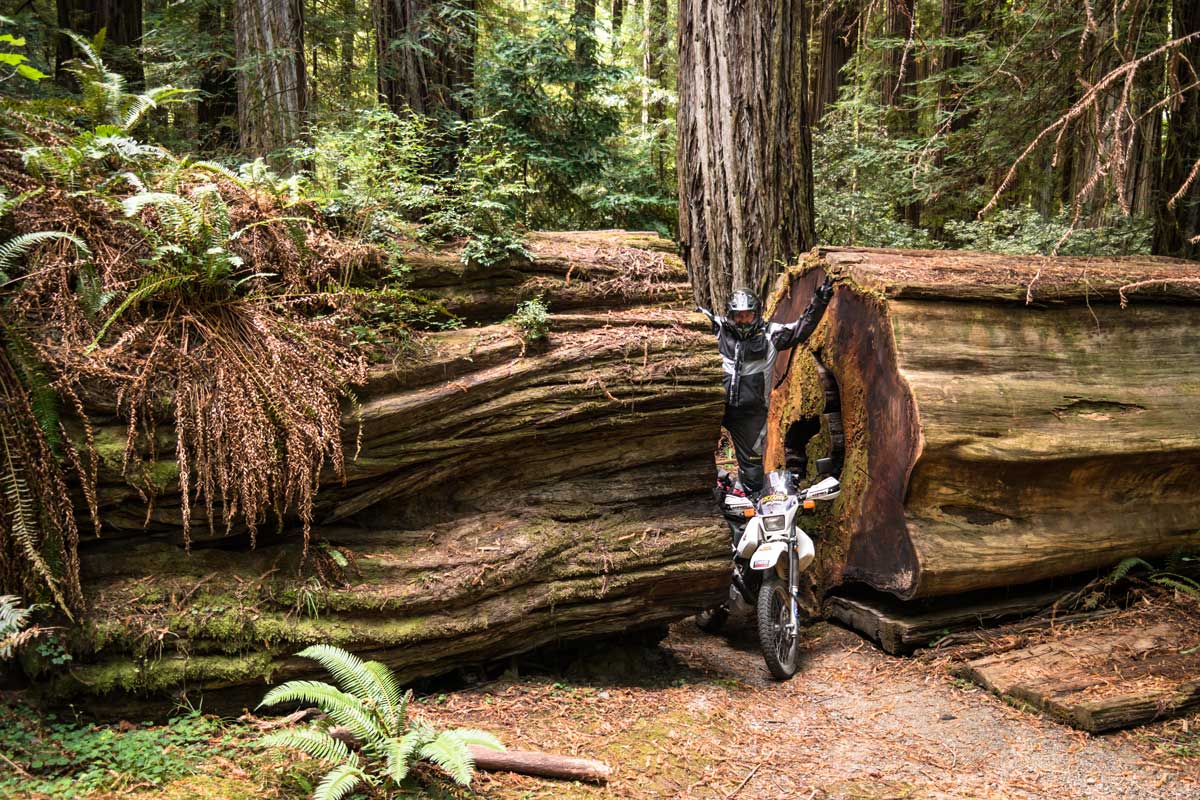 Riding through Redwood National Park, Avenue of the Giants and surrounding areas are an unforgettable experience.
Riding through Redwood National Park, Avenue of the Giants and surrounding areas are an unforgettable experience.
It’s humbling to stand next to a living organism the size of those giants; their presence turns even the hardest of souls into a tree-hugging hippy kid. It might even contribute to good mental health, to sit in a forest just enjoying the quiet calm with these wonderful giants towering into the sky.
With a staggering number of options to beach camp, Usal Beach in our books is one of those best-kept secrets. This remote beach with its black sand is about a mile long and quite deep at the mouth of Usal Creek. It’s a seasonal park and normally open from March through October with suggested to access by 4x4s and adventure motorcycles.
The dark shadowy damp forest road wound all the way along the coast and descended to the beach, breathtaking stuff! It is the kind of road that invites and rewards dual-sport riders. While enjoying a late lunch and some beers that afternoon, after setting up our wild camp, we got the most amazing sight. We were near the beach with a few other campers in the distance, when a massive Roosevelt Elk silently appeared a few meters from our tent. It is a striking and imposing creature to appear out of nowhere, but a wonderful sight. We followed the lazy grazing of two of these magnificent animals the rest of the afternoon. Days later, a local warned us that Roosevelt Elk can be very aggressive in mating season. Maybe so, but we had no problems.
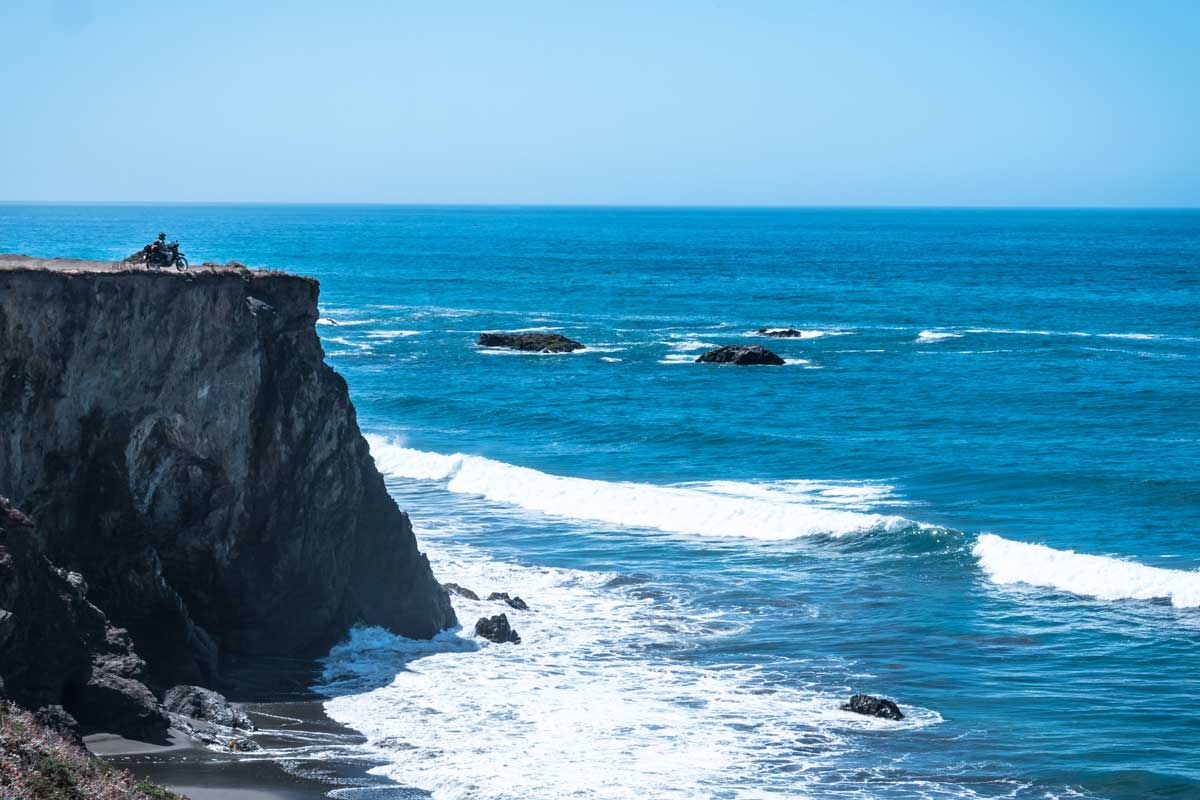 Very few coastlines can boast such beautiful scenery. Foggy days add to the dramatic effect, turning the landscape into a movie set of hobbits and old-world stories.
Very few coastlines can boast such beautiful scenery. Foggy days add to the dramatic effect, turning the landscape into a movie set of hobbits and old-world stories.
Sea lions play in the surf along this part of the coast. Nearby is Sally Bell Grove, a strikingly gorgeous grove of old growth redwoods along an estuary. High up on the bluffs you can see for many kilometers out to sea, including a groovy blow hole and a gorgeous sea cave. Osprey hunt for food at all the beaches. It’s the kind of stuff National Geographic documentaries are made of, except we saw it in real life.
Big cities are not really a highlight of motorcycle travelling, but I guess there are a few in the world worth visiting if you find yourself nearby. San Francisco is one such city in the middle of this beautiful route. The City by the Bay is a melting pot of ethnicities, cultures, and lifestyles—relaxed and easy-going. Places like Haight-Ashbury, the Marina, Baker Beach, Alcatraz and Fisherman’s Wharf are all in a one-day trip, but ridiculously touristy. For foodies, San Francisco has some of the biggest variety of international foods available from every type of restaurant imaginable. Unfortunately, we did not spend nearly enough time there as it was quite a drain on the budget, especially for long-term overlanders like us.
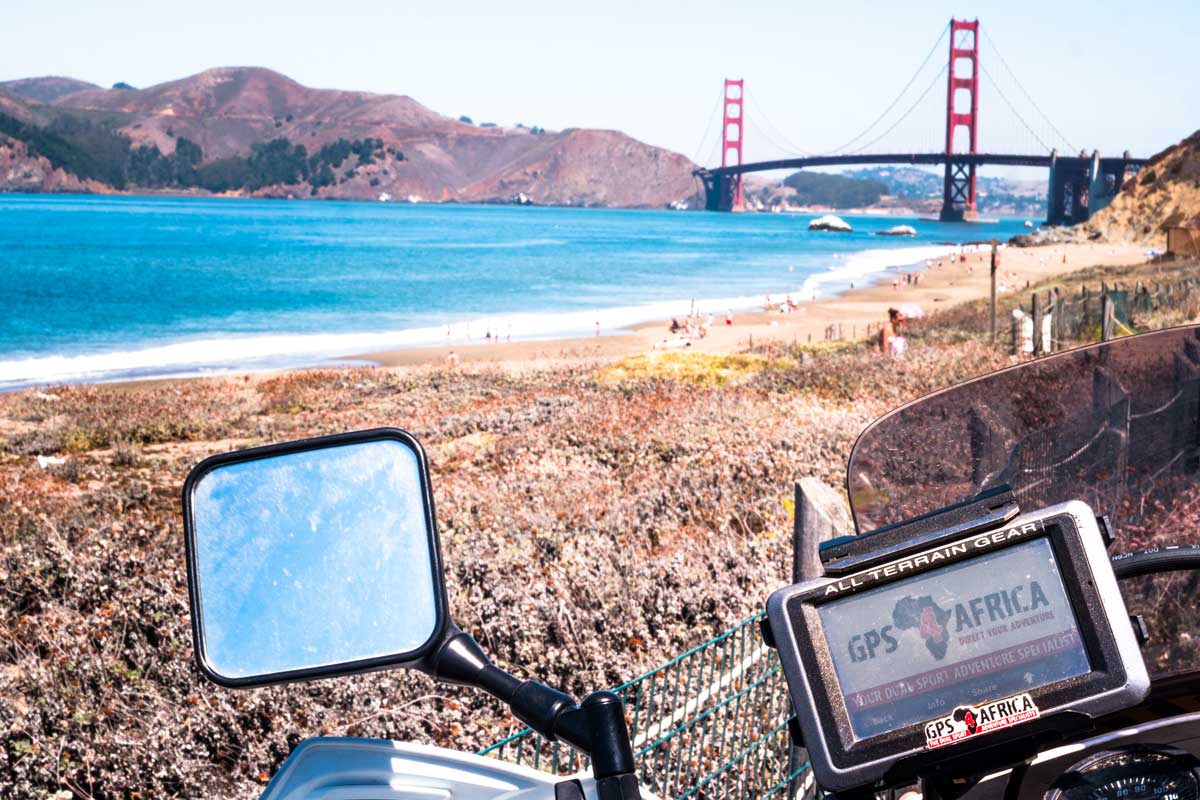 Big cities are not really a highlight of motorcycle travelling, but I guess there are a few in the world worth visiting if you find yourself nearby.
Big cities are not really a highlight of motorcycle travelling, but I guess there are a few in the world worth visiting if you find yourself nearby.
Getting off the main route after San Francisco we headed towards Lake Tahoe and from there south into Yosemite National Park. The Americans did an excellent job building roads in and around Yosemite. As motorcycle riding nirvana, it’s not just the roads that make for a stunning ride, but also the spectacular granite cathedrals, soaring cliffs, domes, and free-falling waterfalls in Yosemite.
Yosemite Valley is a seven-mile-wide canyon with white granite rock formations including El Capitan, the world’s tallest granite monolith. Yosemite Falls is said to be the largest waterfall in North America. And to top it, the local Giant Sequoia are the world’s most massive tree, some estimated to be over 3,000 years old.
What makes them so unique apart from their humungous size is their very specific climate requirements. They only grow naturally in a narrow 400-kilometer strip of mixed conifer forest on the western slopes of the Sierra Nevada Mountains, primarily between 1.5 and 2 kilometers in elevation.
Continuing down through California, we saw only a very brief glimpse of the south coast and didn’t get a chance to touch the inland highlights like Joshua Tree or Death Valley. There’s so much to see and experience on the West Coast that it numbs the senses. It’s a relaxed enjoyable motorcycle ride with all the smells, tastes, and visual pleasures for a memorable trip you’ll remember for a lifetime.
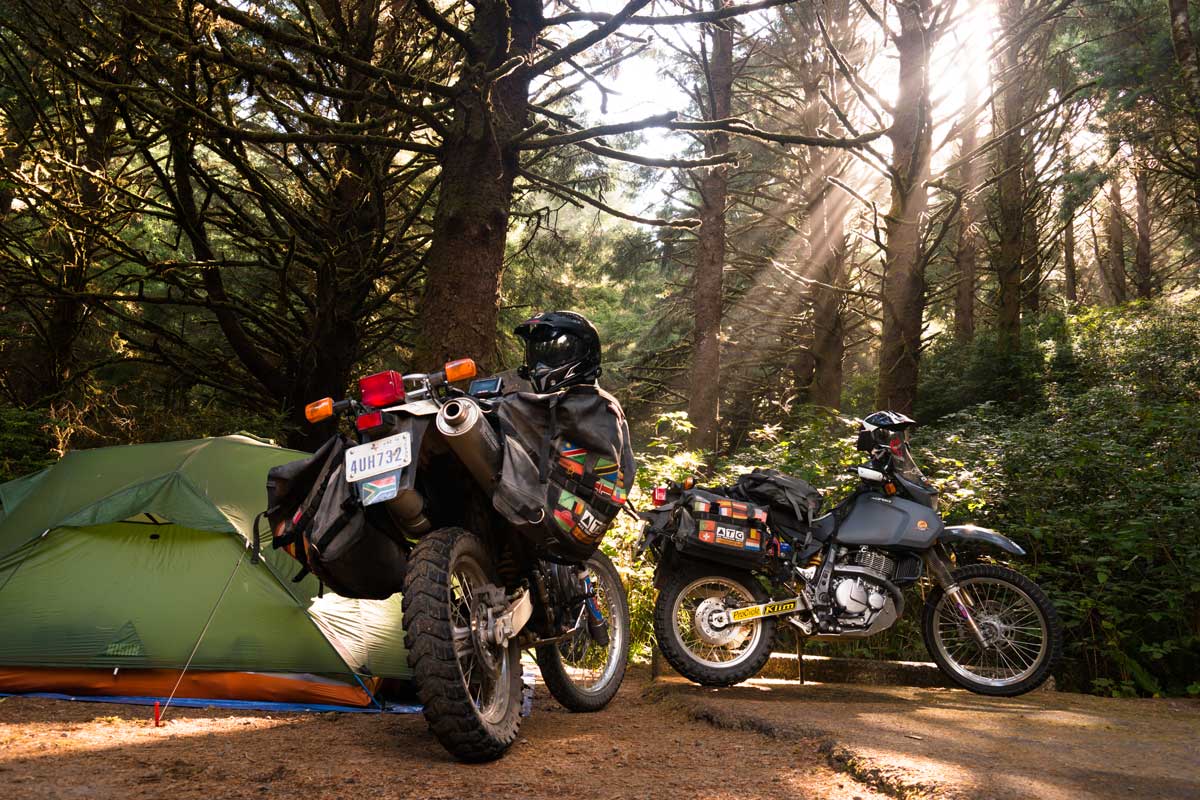 Our “Search” ended up being a relaxed enjoyable motorcycle ride with all the smells, tastes, and visual pleasures for a memorable trip you’ll remember for a lifetime.
Our “Search” ended up being a relaxed enjoyable motorcycle ride with all the smells, tastes, and visual pleasures for a memorable trip you’ll remember for a lifetime.
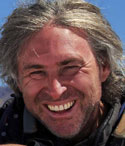 Michnus Olivier, GenX’er born and bred South African product. Known on PikiPikioverland as “The Tyre Fixer.” Not known to follow or believe his own advice, however he loves to share stories and inspiration with others. Michnus and his better half, Elsebie, left South Africa 10 years ago on an initial six-month planned motorcycle trip up to Europe through Africa. Sold mom and the family pets, hit the road exploring on a semi-permanent basis to this day.
Michnus Olivier, GenX’er born and bred South African product. Known on PikiPikioverland as “The Tyre Fixer.” Not known to follow or believe his own advice, however he loves to share stories and inspiration with others. Michnus and his better half, Elsebie, left South Africa 10 years ago on an initial six-month planned motorcycle trip up to Europe through Africa. Sold mom and the family pets, hit the road exploring on a semi-permanent basis to this day.


